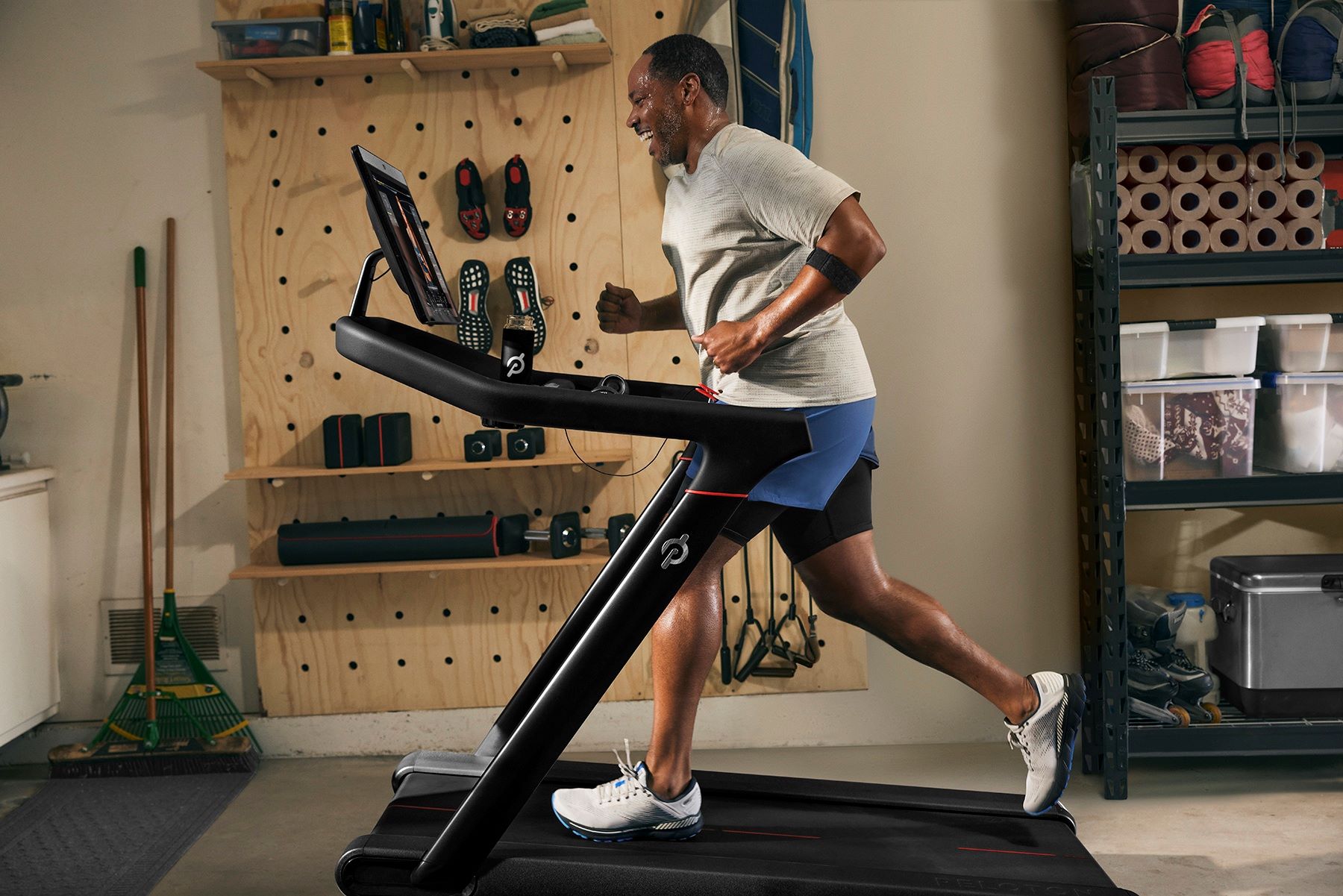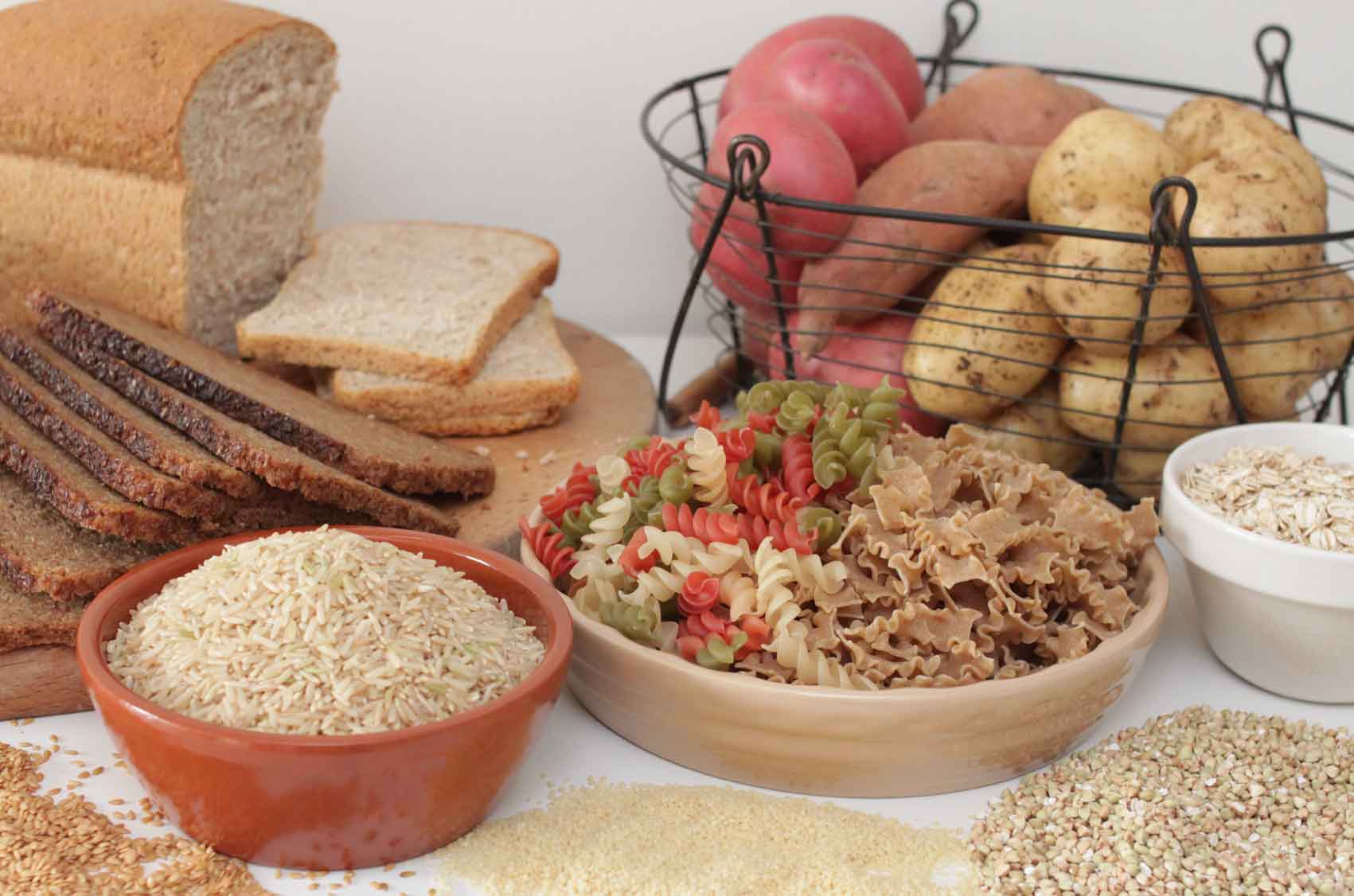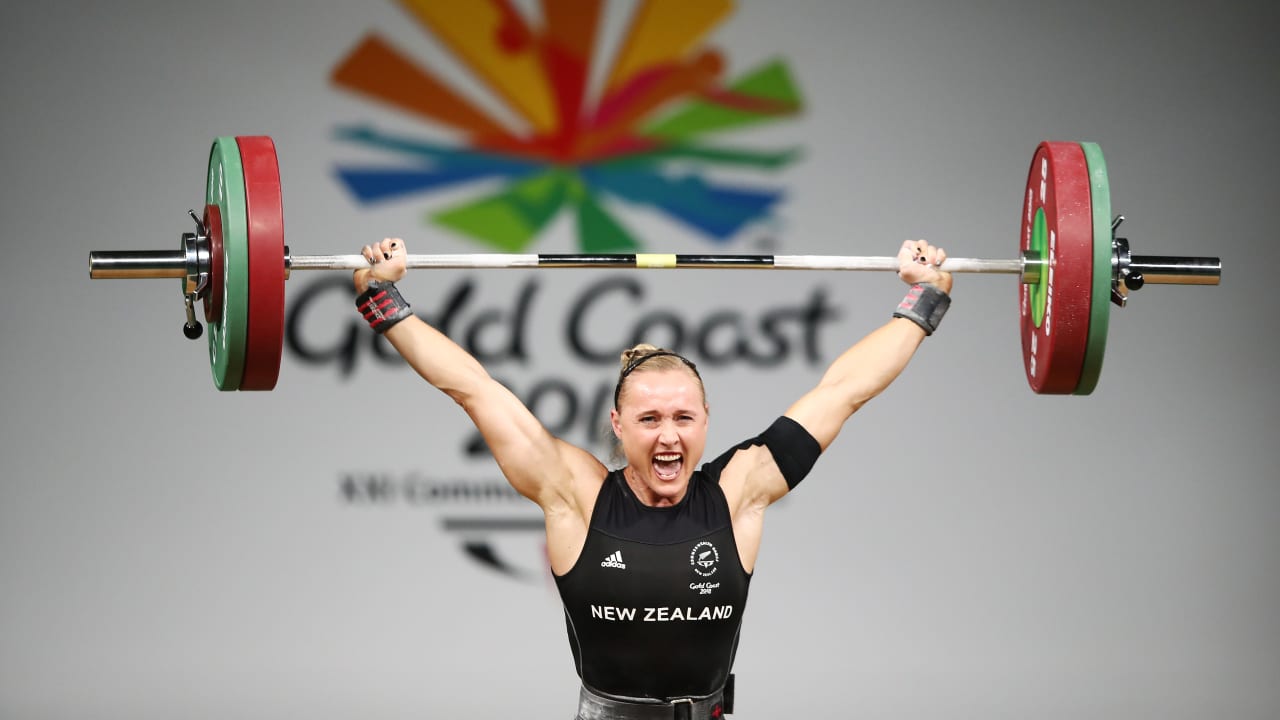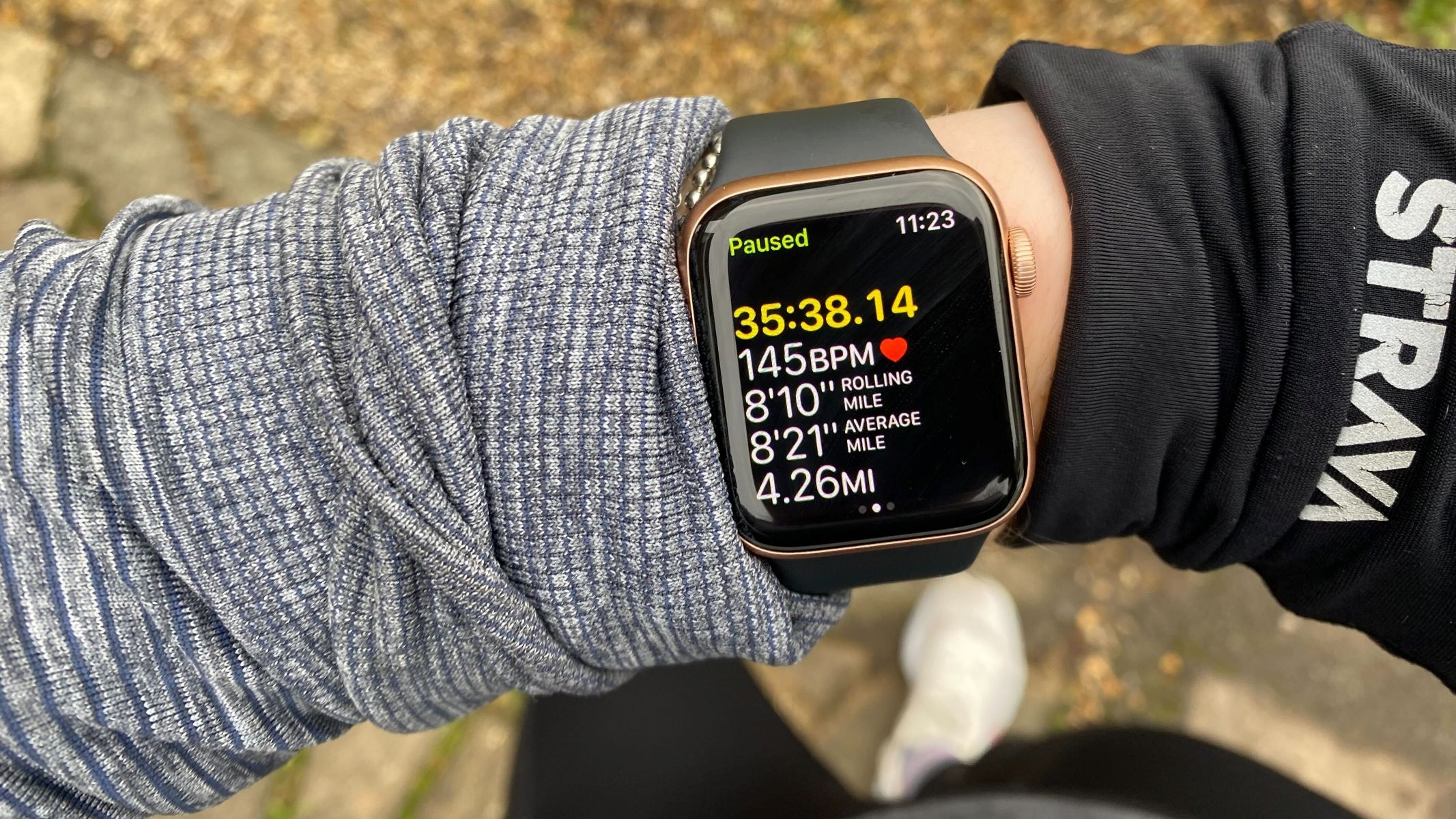Home>Misc>Featured>When To Workout During Intermittent Fasting


Featured
When To Workout During Intermittent Fasting
Modified: January 2, 2024
Discover the optimal times to workout while practicing intermittent fasting. Learn how to maximize your results with our featured guide.
Introduction
Welcome to the world of intermittent fasting! It’s a revolutionary eating pattern that has gained immense popularity in recent years for its numerous health benefits. Not only does intermittent fasting help with weight loss and metabolic health, but it also has the potential to enhance cognitive function and promote longevity.
One key aspect of intermittent fasting that often raises questions is the role of exercise. Should you be working out while fasting? And if so, when is the best time to do so? These are common queries among individuals who are adopting this dietary approach.
In this article, we will dive into the topic of when to workout during intermittent fasting, exploring the benefits of exercise in combination with fasting, different methods of intermittent fasting, the importance of timing, and factors to consider when deciding when to workout. We’ll also provide valuable tips to help you optimize your workouts while fasting.
By the end of this article, you’ll have a clear understanding of how to incorporate exercise effectively into your intermittent fasting routine for maximum results.
Benefits of Intermittent Fasting and Exercise
Intermittent fasting and exercise go hand in hand, offering a multitude of health benefits beyond just weight loss. When combined, these two practices can have a synergistic effect, providing a powerful boost to your overall well-being. Here are some of the key benefits:
- Enhanced weight loss: Intermittent fasting and exercise can create a calorie deficit, leading to more efficient weight loss. Fasting helps regulate insulin levels and promotes fat burning, while exercise increases calorie expenditure.
- Improved metabolic health: Intermittent fasting and exercise have been shown to lower insulin resistance, reduce blood sugar levels, and improve cholesterol and triglyceride profiles. These factors contribute to a healthier metabolism and reduce the risk of chronic diseases such as diabetes and heart disease.
- Increased muscle growth and strength: When you exercise during the feeding window of intermittent fasting, your body has the necessary nutrients from the previous meal to fuel your workouts and support muscle growth. This can lead to improvements in strength, muscle mass, and overall physical performance.
- Enhanced autophagy: Intermittent fasting triggers a cellular process called autophagy, which helps remove damaged cells and waste products from the body. Exercise can further enhance autophagy, promoting cellular regeneration and overall health.
- Improved brain function: Both intermittent fasting and exercise have been linked to cognitive benefits. Fasting increases the production of brain-derived neurotrophic factor (BDNF), a protein that promotes the growth and development of neurons. Exercise also boosts BDNF levels, leading to improved memory, focus, and cognitive function.
By incorporating regular exercise into your intermittent fasting routine, you can amplify these benefits and achieve a greater level of overall health and well-being.
Understanding Intermittent Fasting
Intermittent fasting is not just another fad diet; it’s a lifestyle approach to eating that has been practiced for centuries. At its core, intermittent fasting involves restricting the window of time in which you consume calories, alternating between periods of fasting and eating.
There are several different methods of intermittent fasting, but the most common ones include:
- 16/8 Method: This method involves fasting for 16 hours and restricting your eating window to 8 hours. For example, you might choose to skip breakfast and start eating at noon, then finish your last meal by 8 PM.
- 5:2 Diet: With this approach, you eat normally for five days of the week and restrict your calorie intake to around 500-600 calories on the remaining two non-consecutive days.
- Alternate Day Fasting: This method involves fasting every other day, consuming little to no calories on fasting days, and eating normally on non-fasting days.
- 24-Hour Fast: In this approach, you fast for a full 24 hours once or twice a week, typically starting from dinner to dinner or breakfast to breakfast.
Intermittent fasting works by tapping into your body’s natural metabolic flexibility and hormetic responses. During the fasting period, your insulin levels decrease, allowing your body to switch to fat burning for energy. Additionally, fasting triggers cellular repair processes and stimulates autophagy, leading to various health benefits.
It’s important to note that intermittent fasting is not a license to eat unhealthy foods during your eating window. To achieve the best results, it’s recommended to consume a balanced diet rich in whole foods, including plenty of fruits, vegetables, lean proteins, and healthy fats. Combine this with regular exercise for optimal health outcomes.
Now that you have a basic understanding of intermittent fasting, let’s explore the importance of timing when it comes to integrating exercise into your fasting routine.
Different Methods of Intermittent Fasting
Intermittent fasting offers flexibility when it comes to choosing a fasting schedule that suits your lifestyle and preferences. Here are some popular methods of intermittent fasting:
- 16/8 Method: As mentioned earlier, this method involves fasting for 16 hours and having an eating window of 8 hours. It’s a relatively easy method to adopt as it allows for a normal-sized lunch and dinner.
- 5:2 Diet: With the 5:2 diet, you’ll eat normally for five days of the week and consume fewer calories (around 500-600) on the remaining two days. These two fasting days shouldn’t be consecutive and can be spread out throughout the week.
- Alternate Day Fasting: This method involves fasting every other day. On fasting days, you either restrict your calorie intake to 500-600 calories or completely abstain from food, consuming only water, tea, and coffee.
- 24-Hour Fast: With a 24-hour fast, you’ll refrain from consuming any calories for a full 24 hours once or twice a week. This can be done by fasting from breakfast to breakfast or dinner to dinner.
Each fasting method has its own advantages and challenges. It’s important to choose a method that aligns with your lifestyle and allows you to maintain consistency. Experimentation may be needed to find the fasting schedule that works best for you.
Keep in mind that hydration is key during fasting periods. Drinking water, herbal tea, and black coffee can help curb hunger and keep you hydrated throughout the fasting window. It’s also important to listen to your body and adjust your fasting schedule accordingly.
Now that you have a better understanding of different intermittent fasting methods, let’s explore the importance of timing your workouts while fasting for optimal results.
Importance of Timing in Intermittent Fasting
Timing plays a crucial role in intermittent fasting, especially when it comes to incorporating workouts into your fasting routine. The timing of your meals and exercise sessions can impact the effectiveness of both fasting and exercise. Here’s why timing matters:
Maximizing fat burning: When you’re in a fasted state, your body relies on stored fat as a source of energy. By scheduling your workouts during the fasting period, you can optimize fat burning and potentially accelerate weight loss.
Boosting muscle growth: While fasting, your body releases growth hormone, which plays a key role in muscle growth and repair. By strategically timing your workouts during periods of elevated growth hormone levels, you can enhance muscle development and recovery.
Improving energy levels: Some individuals find that they have increased energy and focus during their fasting period. By exercising while in a fasted state, you may experience heightened mental clarity and physical endurance, leading to more productive workouts.
Avoiding digestive discomfort: Exercising immediately after a meal can often lead to digestive discomfort or cramping. By waiting until your fasting window is over, you can exercise with a more comfortable stomach and avoid potential gastrointestinal issues.
Optimizing nutrient absorption: Eating a balanced meal post-workout is crucial for muscle recovery and growth. By timing your workouts towards the end of your fasting window, you can ensure that you consume a nutrient-rich meal, allowing your body to absorb and utilize the nutrients more effectively.
It’s important to note that while exercising during the fasting window can have its benefits, it may not be suitable for everyone. Factors such as individual energy levels, workout intensity, and personal preferences should be taken into consideration. If you find that exercising on an empty stomach is negatively affecting your performance or overall well-being, it’s perfectly acceptable to schedule your workouts during your eating window while still enjoying the benefits of intermittent fasting.
Now that we understand the importance of timing, let’s explore the best time to workout during intermittent fasting in the next section.
The Best Time to Workout During Intermittent Fasting
Determining the best time to workout during intermittent fasting depends on various factors, including your body’s response and your personal preferences. However, two common approaches have proven effective for many individuals:
- Fasted morning workouts: For those who prefer to exercise while in a fasted state, morning workouts are often the go-to option. By exercising in the morning before breaking your fast, you can tap into your body’s stored fat for energy and potentially accelerate fat burning. Additionally, morning workouts can boost your metabolism and provide an energy boost for the rest of the day.
- Pre-meal workouts: If fasting workouts feel too challenging or draining, you can choose to exercise closer to your first meal. In this approach, you break your fast with a post-workout meal, providing your body with the necessary nutrients to support muscle recovery and growth. This can be ideal for individuals who prefer to have more energy and fuel for their workouts.
Ultimately, the best time to workout during intermittent fasting is the time that works best for you. It’s important to listen to your body and find a schedule that aligns with your energy levels, personal preferences, and daily routine.
Additionally, it’s worth considering the type of exercise you’re engaging in. Light to moderate-intensity workouts, such as yoga, brisk walking, or jogging, can be done during the fasting window without much impact on performance. However, if you’re engaging in high-intensity or strength training exercises, you may benefit from having a small pre-workout snack to ensure you have enough energy to perform at your best.
Experimentation is key when finding the best workout timing for your fasting routine. Pay attention to how your body responds to different workout times and adjust accordingly based on your energy levels, performance, and overall well-being.
Next, let’s explore some important factors to consider when deciding when to workout during intermittent fasting.
Factors to Consider When Deciding When to Workout
When determining the best time to workout during intermittent fasting, there are a few important factors to consider. These factors can vary from person to person, so it’s essential to take your individual circumstances into account. Here are some key considerations:
- Energy levels: Take note of your energy levels throughout the day. Some people naturally have more energy in the morning, while others feel more energized in the afternoon or evening. Choose a workout time when you feel most refreshed and energized to get the most out of your exercise session.
- Workout intensity: The intensity of your workouts can also influence when to schedule them. If you prefer high-intensity or weightlifting workouts, you may benefit from having a meal or snack beforehand to provide your body with sufficient fuel. On the other hand, lower-intensity workouts can be more suitable for exercising in a fasted state.
- Daily routine and schedule: Consider your daily commitments and responsibilities. If your mornings are busy and hectic, fitting in a workout during that time may be challenging. Opting for an evening workout might be more convenient for individuals who have more flexibility later in the day.
- Sleep quality: Adequate sleep is crucial for optimal health and workout performance. If working out in the evening disrupts your sleep schedule or makes it difficult for you to wind down at night, it might be beneficial to choose a different time to exercise.
- Personal preferences: Ultimately, your personal preferences should be taken into account. If you enjoy starting your day with a burst of physical activity, a morning workout might be the best fit for you. On the other hand, if you prefer easing into your day and having more energy later on, an afternoon or evening workout might suit you better.
Remember that finding the ideal workout time during intermittent fasting is a process of trial and error. Pay attention to how your body responds to different workout times and adjust accordingly based on your energy levels, performance, and overall well-being.
Now that you have a better understanding of the factors to consider, let’s explore some valuable tips to optimize your workouts during intermittent fasting.
Tips for Effective Workouts During Intermittent Fasting
To make the most of your workouts during intermittent fasting, here are some tips to keep in mind:
- Stay hydrated: Hydration is crucial during fasting and exercise. Make sure to drink plenty of water before, during, and after your workout to stay properly hydrated.
- Listen to your body: Pay attention to how your body feels during your fasting window and adjust your workout intensity accordingly. If you’re feeling fatigued or low on energy, opt for lower-intensity activities or focus on stretching and mobility exercises.
- Timing of pre-workout meals: If you find that exercising in a fasted state affects your performance, consider having a small pre-workout snack containing protein and carbohydrates. This can help provide energy and improve workout performance.
- Include both cardio and strength training: A well-rounded workout routine should include both cardiovascular exercises and strength training. Cardio sessions can be done during fasting periods, while strength training might benefit from having fueled muscles. Consider scheduling these workouts accordingly.
- Focus on recovery: Ensure that you’re allowing your body enough time to recover between workouts. Quality sleep, proper nutrition, and active recovery exercises, such as stretching or foam rolling, are essential for muscle repair and growth.
- Experiment with different workout times: Don’t be afraid to try different workout times and observe how your body responds. You might discover that your performance improves at a specific time of day or notice other patterns that work best for you.
- Be consistent: Consistency is key when it comes to achieving fitness goals. Aim to stick to a regular workout routine that aligns with your fasting schedule to ensure steady progress and results.
Remember, the most effective workout routine is one that you enjoy and can stick to in the long run. Find activities that you love and focus on creating a balanced approach to exercise that complements your intermittent fasting lifestyle.
Now that you have valuable tips for optimizing your workouts, you’re equipped to incorporate exercise effectively into your intermittent fasting routine.
Conclusion
Intermittent fasting offers a multitude of health benefits, and when combined with regular exercise, it can enhance your overall well-being even further. Understanding the different methods of intermittent fasting, the importance of timing, and the factors to consider when deciding when to workout are key to creating an effective fitness routine.
Whether you choose to exercise in a fasted state or closer to your eating window, it’s important to listen to your body and find what works best for you. Remember to stay hydrated, fuel your body with nutritious meals, and prioritize recovery for optimal results.
By incorporating regular workouts into your intermittent fasting routine, you can maximize fat burning, boost muscle growth, and improve metabolic health. Additionally, exercising during fasting periods can provide mental clarity and heightened energy levels.
Experiment with different workout times, be consistent in your approach, and have patience as you discover the optimal combination that works for your unique needs and preferences. Remember, the ultimate goal is to find a sustainable routine that supports your health and fitness goals.
So go ahead and embrace the power of intermittent fasting and exercise to reach new heights in your fitness journey. It’s time to unlock the incredible benefits that await!









